Articles & Videos
Helping students make correct grapheme choices: Unpacking the Kite Sound Box
Categories
Subscribe to our newsletters
Receive teaching resources and tips, exclusive special offers, useful product information and more!
Helping students make correct grapheme choices: Unpacking the Kite Sound Box
Sound Waves Literacy 4/11/20
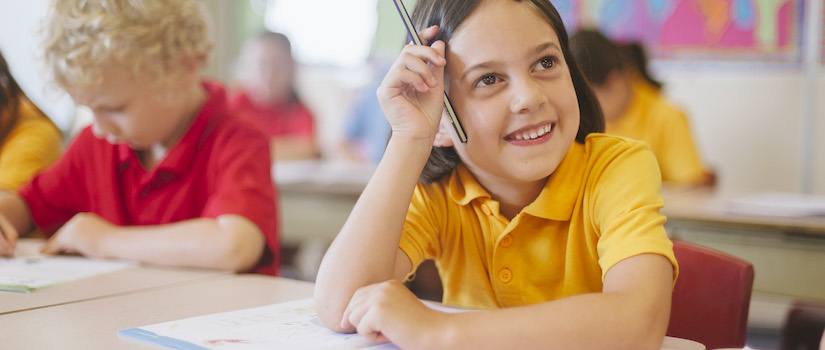
Some phonemes (sounds) are represented by just one or two different graphemes (letter/s). Other phonemes can be represented by several different graphemes and therefore require more complex decision-making to achieve correct spelling.
Take the phoneme you hear at the start of kite. Students learn that this sound can be represented by the graphemes k, c, q, ck or ch – just to list a few.
Fortunately, for this phoneme there are a number of reliable patterns you can teach students to ensure they can confidently choose the correct grapheme. Let’s look at some of these handy spelling patterns!
We usually use the grapheme ‘ck’ for ![[**k**ite]](/content/www/article-images/SWAV_2-6_Kite_SB.png) after short vowels at the end of single-syllable base words.
after short vowels at the end of single-syllable base words.
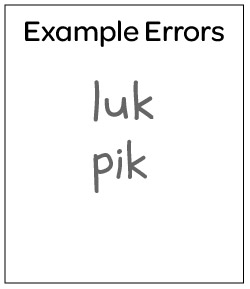 This is one of the very first patterns students need to be taught. Demonstrate to early years students how they can use this pattern to correctly spell simple, high-frequency base words like pack, check, sick, lock and duck. Upper years students can use their understanding of this pattern to successfully build words from these simple base words, like packing, checked, sickness, unlock and duckling.
This is one of the very first patterns students need to be taught. Demonstrate to early years students how they can use this pattern to correctly spell simple, high-frequency base words like pack, check, sick, lock and duck. Upper years students can use their understanding of this pattern to successfully build words from these simple base words, like packing, checked, sickness, unlock and duckling.
Misspelling base words ending with ck can result in errors that lead to miscommunication. For example, here’s what happens when a student starts with an incorrectly spelled base word and then adds the suffix ing:
Target word: back
Misspelled word: bak
Misspelled word with suffix : baking
Target word: track
Misspelled word: trac
Misspelled word with suffix : tracing
In both examples the misspelt base word ends up with a completely different meaning when the suffix is added. These are simple mistakes that can be avoided if students have an understanding of when to choose the grapheme ck for ![]() .
.
This spelling pattern is very reliable and has few exceptions. The main exceptions are single-syllable colloquial words that may pop up in informal texts. For example: ‘I’ll take a pic of the croc in a sec.’
We usually use the grapheme ‘c’ for ![[**k**ite]](/content/www/article-images/SWAV_2-6_Kite_SB.png) before
before 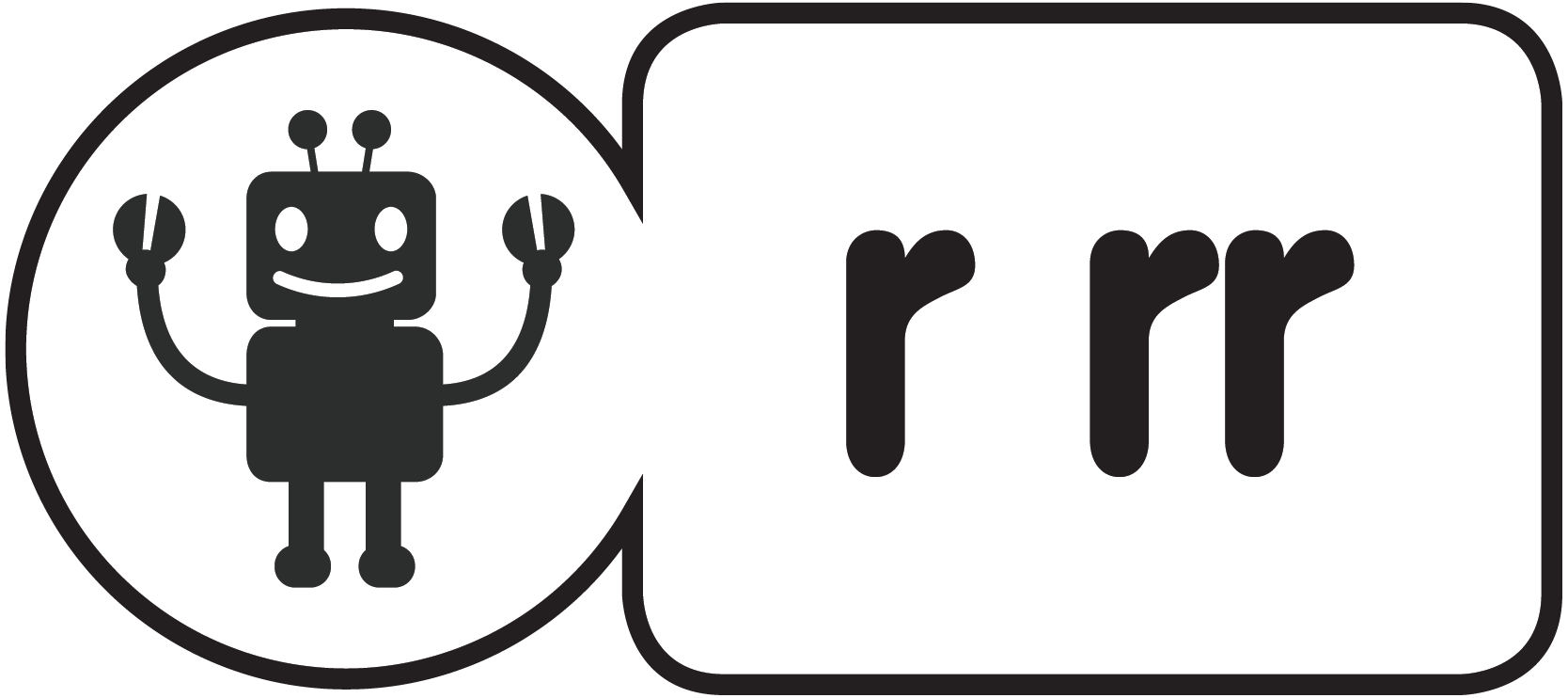 .
.
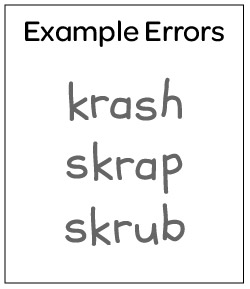 Show early years students how to use this pattern to spell words beginning with
Show early years students how to use this pattern to spell words beginning with ![]()
![]() , such as crab, crush and creek, as well as words beginning with
, such as crab, crush and creek, as well as words beginning with ![]()
![]()
![]() , such as scrub, scratch and scream. In the upper years, encourage students to apply the same pattern to spell more advanced words, such as crystal, crumble, creature, scribble, scramble and scrumptious. Note that this pattern can still be applied when
, such as scrub, scratch and scream. In the upper years, encourage students to apply the same pattern to spell more advanced words, such as crystal, crumble, creature, scribble, scramble and scrumptious. Note that this pattern can still be applied when ![]()
![]() and
and ![]()
![]()
![]() are in the middle of words, like in secret, decrease, incredible and subscription.
are in the middle of words, like in secret, decrease, incredible and subscription.
This pattern is very reliable and only has a handful of exceptions. The exceptions are usually words that made their way into English from other languages, like krill (Norwegian) and sauerkraut (German).
It’s important to understand that this pattern only applies when the sounds ![]()
![]() appear together within one syllable. When the sounds are not together within a syllable, the pattern does not apply. This sometimes occurs in compound words. For example:
appear together within one syllable. When the sounds are not together within a syllable, the pattern does not apply. This sometimes occurs in compound words. For example:
work.room
dark.room
break.room
We usually use the grapheme ‘c’ for ![[**k**ite]](/content/www/article-images/SWAV_2-6_Kite_SB.png) before
before 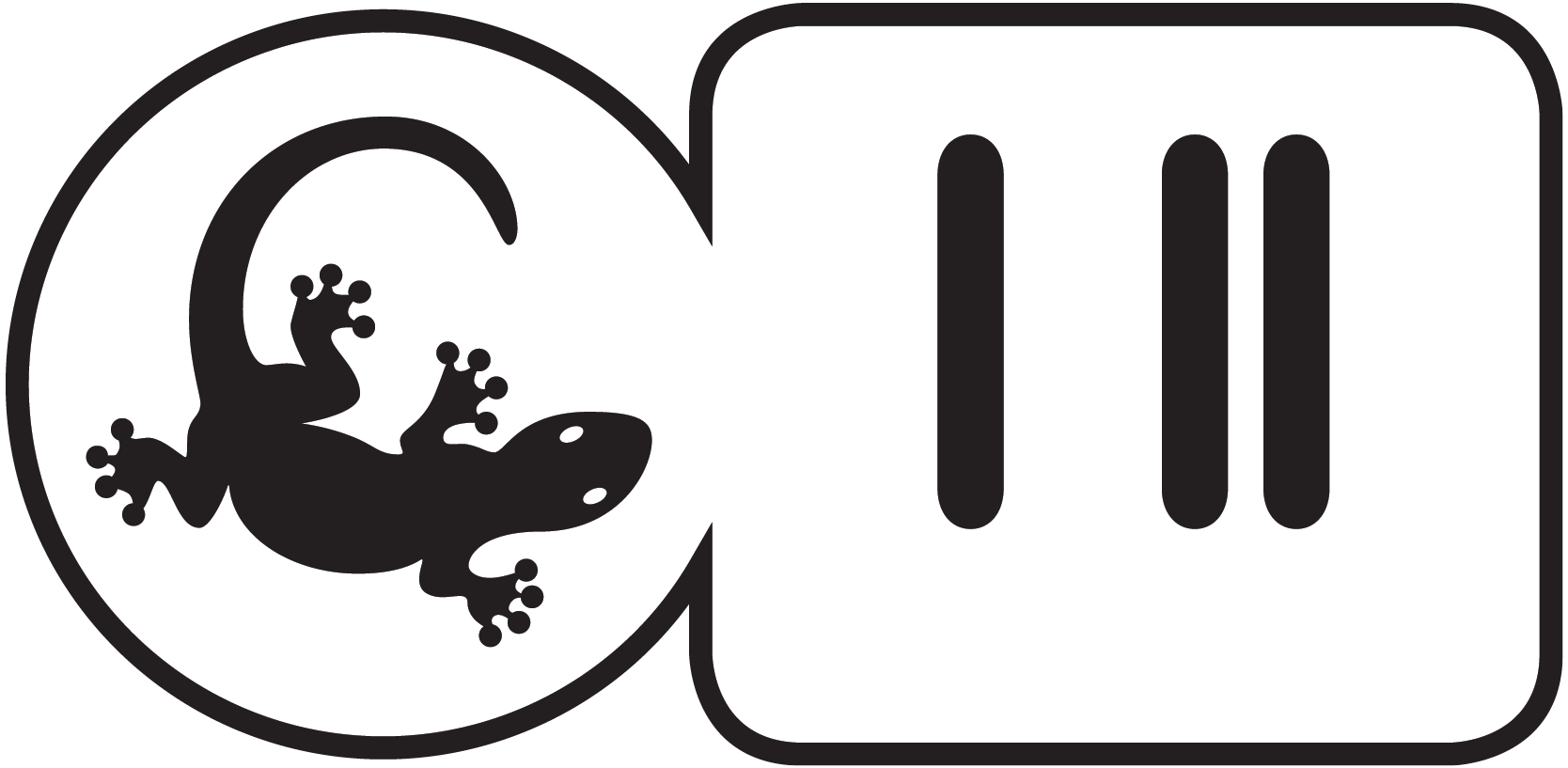 .
.
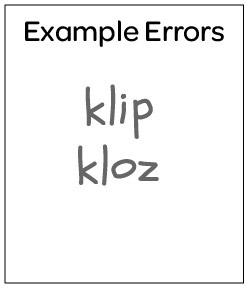 Teach this pattern in the early years when students learn to spell words beginning with
Teach this pattern in the early years when students learn to spell words beginning with ![]()
![]() , such as clap, class and cloud. As students advance, show how this pattern supports the correct spelling of more difficult words with
, such as clap, class and cloud. As students advance, show how this pattern supports the correct spelling of more difficult words with ![]()
![]() in initial or medial positions, such as clarinet, cluster, clothing, include, decline and exclaim.
in initial or medial positions, such as clarinet, cluster, clothing, include, decline and exclaim.
Again, this pattern applies when ![]()
![]() occur together within one syllable. However, the pattern does not apply in the following words because the sounds are split across syllables:
occur together within one syllable. However, the pattern does not apply in the following words because the sounds are split across syllables:
book.let
weak.ling
week.ly
A few other words, unlikely to be found in everyday student writing, do not conform to the pattern due to their origins, such as klutz (Yiddish) and kleptomania (Greek).
In words with ![[**k**ite]](/content/www/article-images/SWAV_2-6_Kite_SB.png)
 , we usually use the graphemes ‘q’ for
, we usually use the graphemes ‘q’ for ![[**k**ite]](/content/www/article-images/SWAV_2-6_Kite_SB.png) and ‘u’ for
and ‘u’ for  .
.
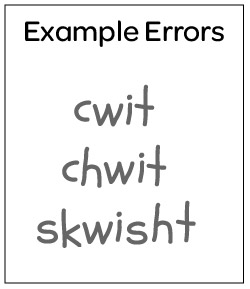 Tell students that when they hear the sound
Tell students that when they hear the sound ![]() followed by
followed by ![]() , the most reliable graphemes to use are q and u.
, the most reliable graphemes to use are q and u.
Teach students this pattern early on when they’re learning to spell simple words beginning with the sounds ![]()
![]() , such as quit, quiz and queen.
, such as quit, quiz and queen.
Students can apply the same pattern as they progress to words with ![]()
![]()
![]() , such as squash, squid, squeeze and squeak. The pattern continues to apply to more advanced words where the sounds
, such as squash, squid, squeeze and squeak. The pattern continues to apply to more advanced words where the sounds ![]()
![]() appear in initial or medial positions, such as quality, question, quantity, squander, squiggle, tranquil, sequence, and frequent.
appear in initial or medial positions, such as quality, question, quantity, squander, squiggle, tranquil, sequence, and frequent.
A few words do not adhere to this pattern due to their origins, such as Kwanzaa (Swahili) and tae kwon do (Korean). As with the other patterns, if ![]()
![]() are split across syllables, the pattern does not apply:
are split across syllables, the pattern does not apply:
walk.way
silk.worm
cook.ware
Note: Some students may have been taught that qu represents a single ‘sound’ /kw/. However, words such as quit and question actually start with a blend of two phonemes – ![]()
![]() . In fact, students actually demonstrate an ability to notice these separate phonemes when they make spelling errors such as writing cwit for quit.
. In fact, students actually demonstrate an ability to notice these separate phonemes when they make spelling errors such as writing cwit for quit.
As you can see, spelling becomes predictable and reliable when we begin to closely examine patterns within words. Whilst there are multiple grapheme choices for ![]() , the process of choosing a grapheme does not have to be random. Teaching students about spelling patterns, like those governing the graphemes in
, the process of choosing a grapheme does not have to be random. Teaching students about spelling patterns, like those governing the graphemes in ![]() , enables students to make informed grapheme choices when attempting unknown words in their everyday writing.
, enables students to make informed grapheme choices when attempting unknown words in their everyday writing.
If you’re using Sound Waves Literacy, spelling patterns are conveniently integrated within relevant lesson slideshows available at Sound Waves Literacy Online. You can also find these patterns and more under the ‘Sound Waves Helpful Hints’ located at the back of the Student Books (Years 1–6).